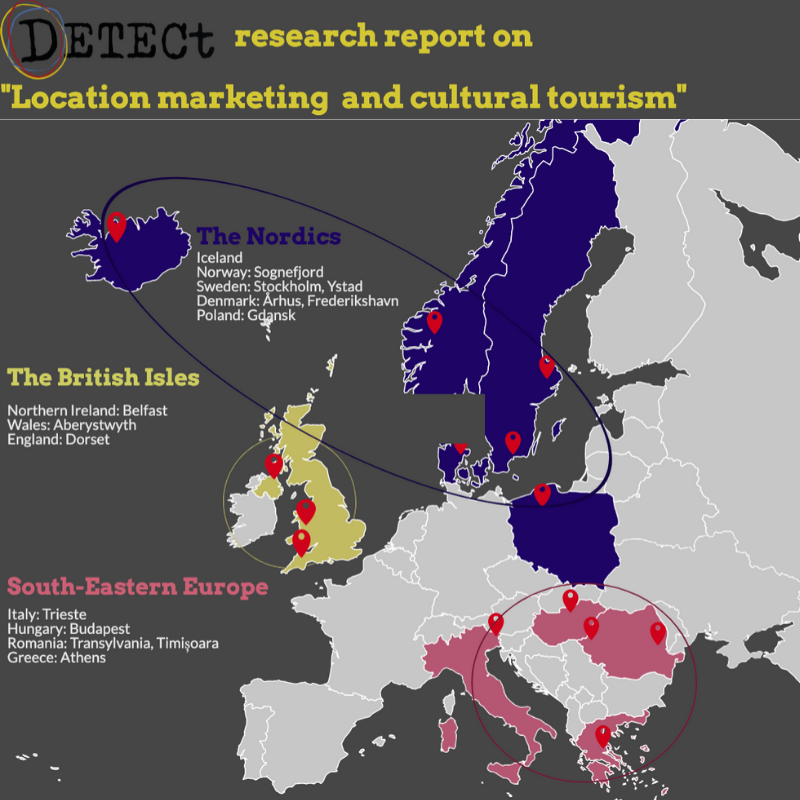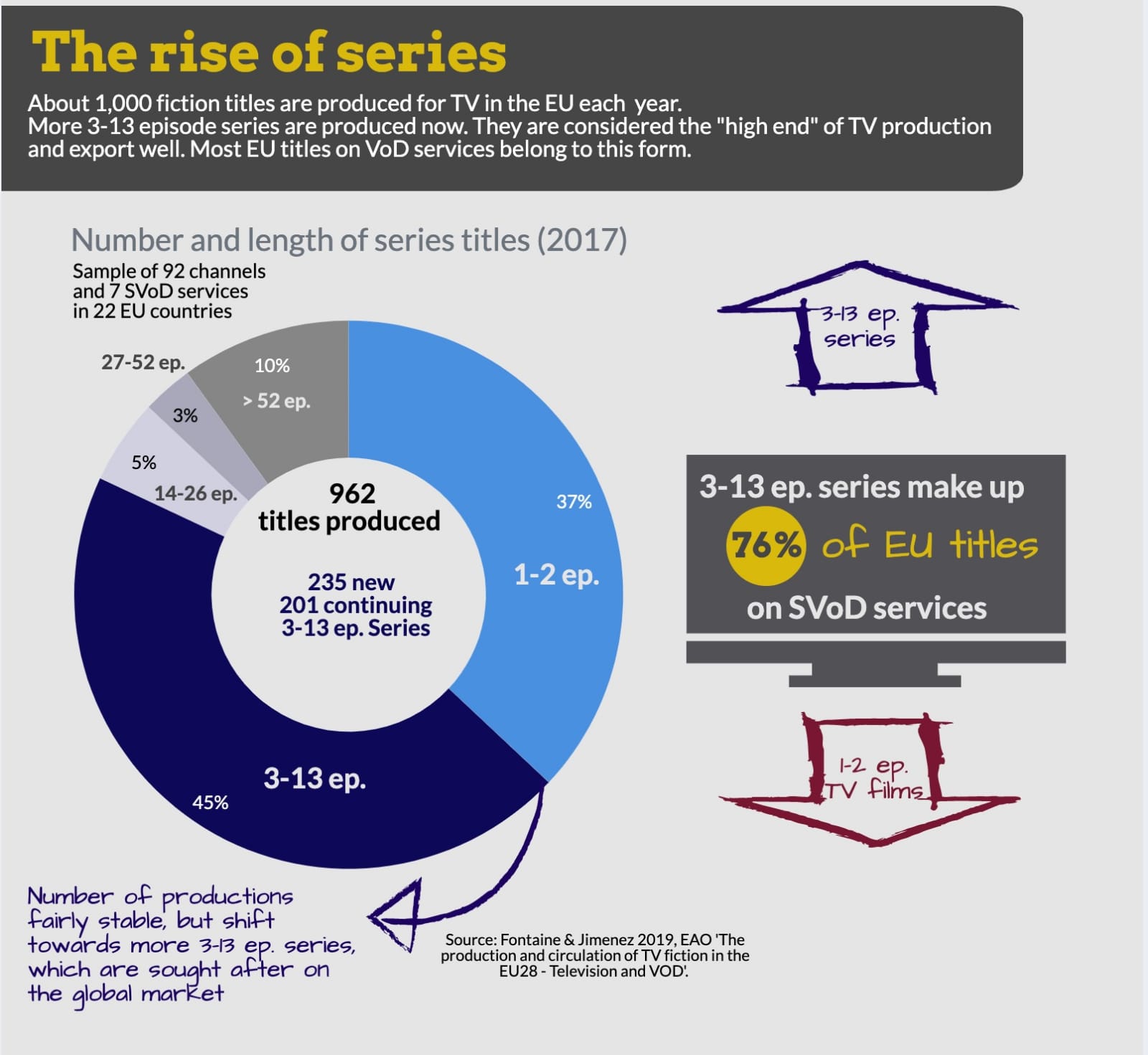The research report “Location Marketing and Cultural Tourism” now online
The research report “Location Marketing and Cultural Tourism” now online

Download the report
The DETECt consortium has now published its first public research report on the topic “Location marketing and cultural tourism. Crime narratives as destination branding”. The report can be downloaded for free from the Deliverables section of this website.
In 13 chapters, 19 authors from eight DETECt partner institutions in seven countries analyze how locations are selected, depicted and marketed in contemporary crime literature, film and television.
The report analyses film, TV and literary locations in three regions. In the British Isles, home of the crime genre and location of man popular crime TV series, examples like Broadchurch and The Fall show that British crime shows increasingly take viewers outside London, which contributes to the local economies in Dorset and Northern Ireland.
This infographic sums up the scope and the key findings of the report.



